Three Occasions for Transcendental Festivals

Three festival days of special celebration for all devotees occur during August and September. Janmastami, Vyasa-puja of Srila Prabhupada and Radhastami.

Three festival days of special celebration for all devotees occur during August and September. Janmastami, Vyasa-puja of Srila Prabhupada and Radhastami.
At JFK International Airport, as more than one hundred disciples royally greeted him and curious reporters thronged around him, Srila Prabhupada explained, in clear language and with fixed conviction, the Krishna conscious philosophy of a God-centered society in which “everything animate and inanimate is recognized to be controlled and owned by the Lord.”
All the press operations, including shooting with a copy camera, designing, spotting, stripping, printing, cutting and binding, are carried out by the disciples, with the intention of pleasing the Supreme Personality of Godhead and His pure devotee, Srila Prabhupada.
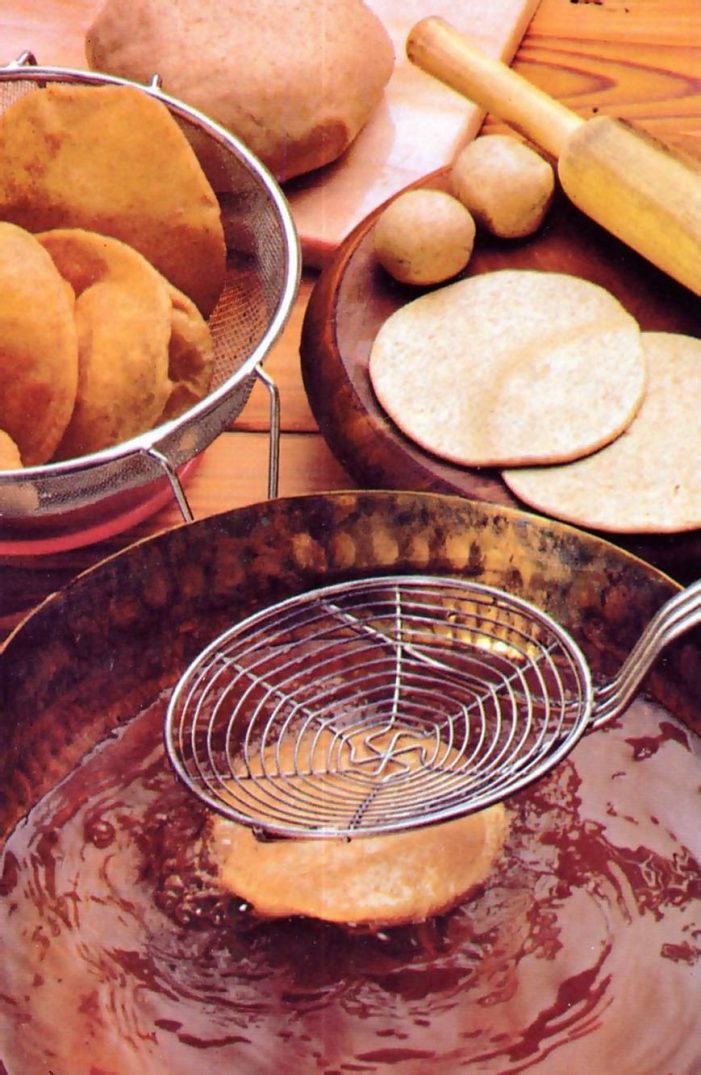
We would sit together and eat fresh hot puris with hot milk. For me it is hard to see how Westerners enjoy dry bread when there is something as wonderful as puris.

We faced so many difficulties, but gradually we saw how Krsna assembled a varied and competent crew to build this temple. “The devotees saw the project as a labor of love for glorifying the Supreme Lord and His pure devotee, Srila Prabhupada.
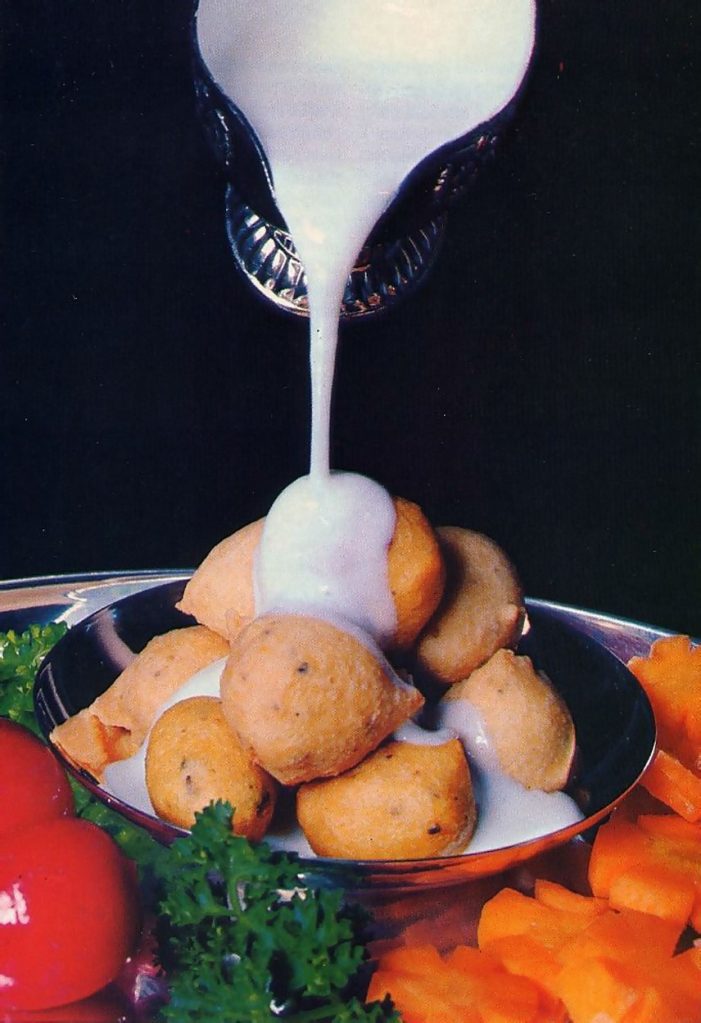
Badas in India were one of my favorite dishes, but in Oregon it was such an ordeal to make them that my taste for them dramatically waned. Making badas with a blender eliminates the grind and adds to the pleasure of cooking classic Vedic dishes.

For so long I’d been hearing the devotees in Mayapur talk about terra cotta panels, terra cotta tiles, terra cotta bas-reliefs, terra cotta statues, terra cotta this, terra cotta that. After seven years I’d developed a kind of apathetic I’ll-believe-it-when-I-see-it attitude.

John, a traveler, found himself in Istanbul. With nothing to do, he’d gone to the magnificent Blue Mosque, an awe-inspiring monument with huge stained-glass windows, to offer a sincere prayer to God—the first such prayer of his life.
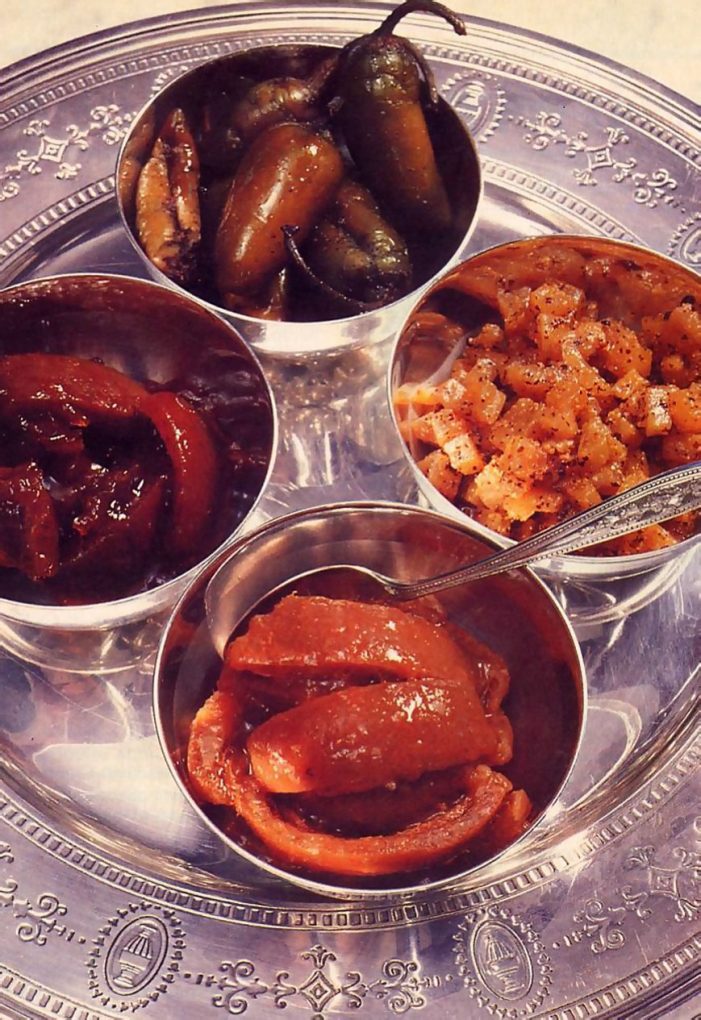
For centuries, people throughout the world have known that extremely salty, acidic, or sweet foods don’t spoil. And for centuries people have employed various techniques to preserve, or pickle, their foods.

Word spread quickly about the exotic and delicious vegetarian feasts the Hare Krsna devotees were having. Before long, each Sunday the small temple room and courtyard would fill with guests eager to try the delicacies the devotees were generously serving.
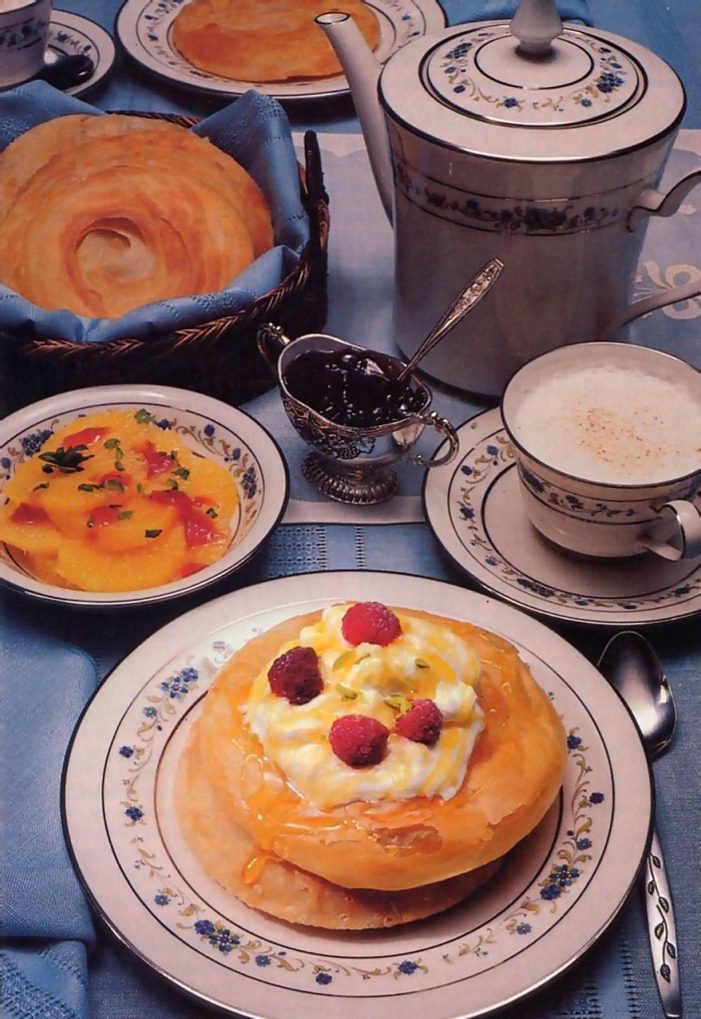
Werkie parathas are deep-fried so they turn out more like a pastry than a flat bread. They’re multilayered and have a rich, buttery flavor. They’re ideal as a breakfast treat or an afternoon snack. But werkies are for those who want a culinary challenge: they’re tricky to make.

Hare Krsna devotees don’t eat meat, fish, or eggs, they don’t have to worry about cholesterol in fried foods. A tablespoon of ghee contains only 31 milliliters of cholesterol—nothing compared to the 274 milliliters in just one egg.
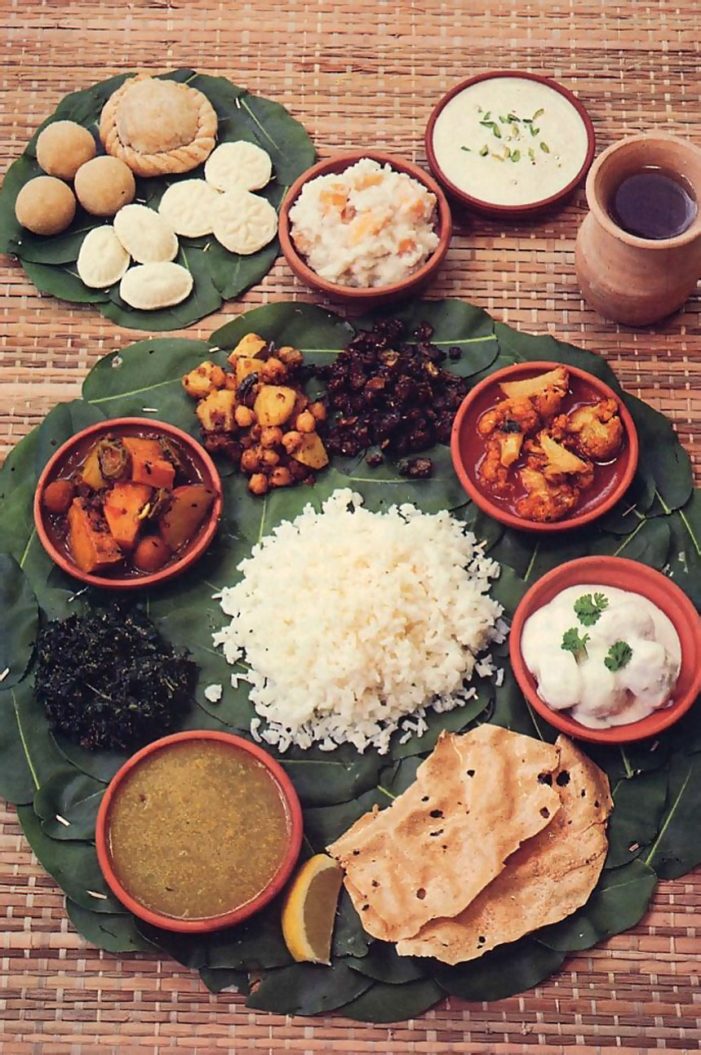
Advaita Acarya offered to the Deity of Lord Krsna the feast his wife had prepared. Pleased to see the gorgeous arrangement for Krsna’s pleasure, Lord Caitanya expressed His great satisfaction. Then He humbly sat down to one side, expecting to take a small portion of the offering.
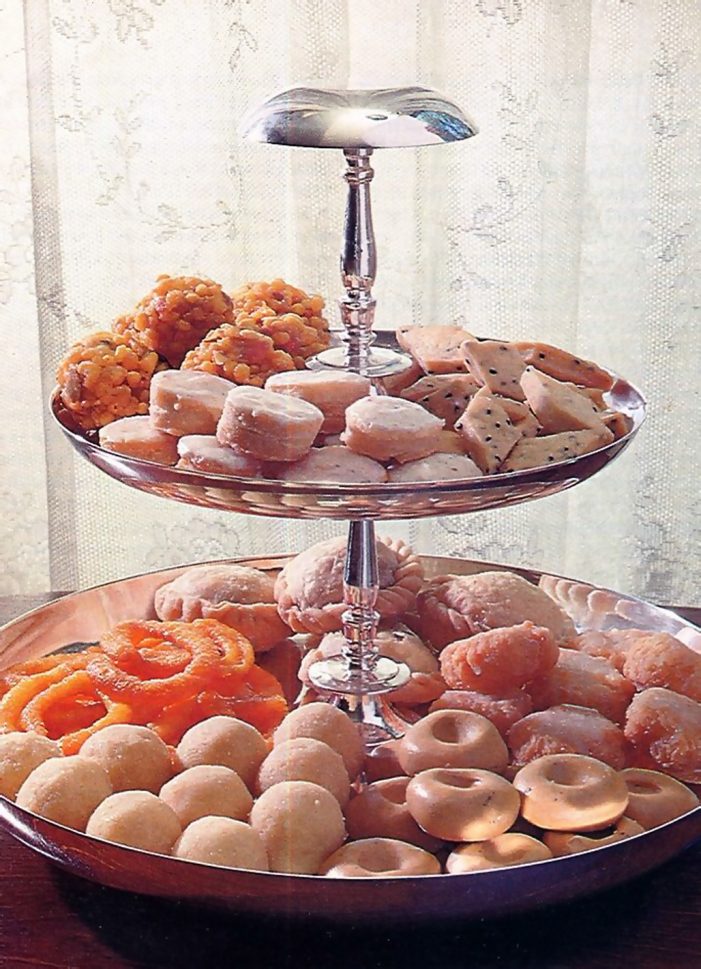
The art of making these sweets has been preserved through generations of specialized sweet-makers in India. There the sweet repertoire is extensive and elaborate, and although preparing such sweets may appear simple, to do it masterfully requires great skill.
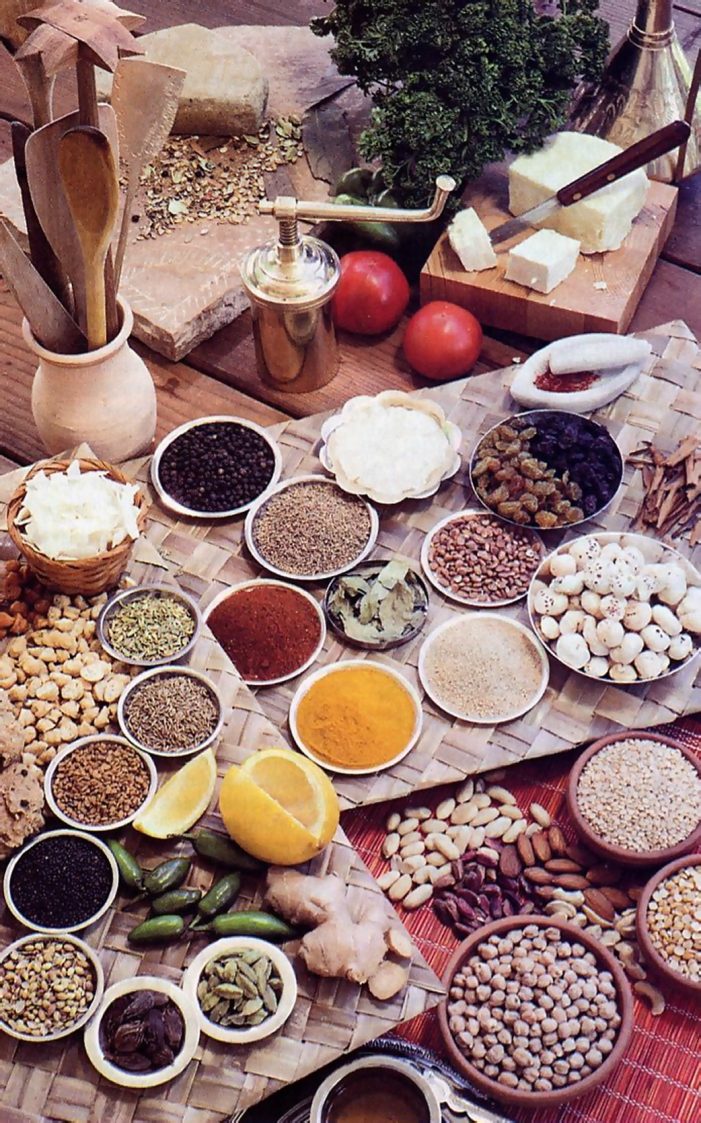
There are sweet spices, like cinnamon and cardamom, pungent ones like cayenne, and mixed tastes like cumin and coriander. Spices influence not only the taste of food, but also the appearance, texture, and aroma.
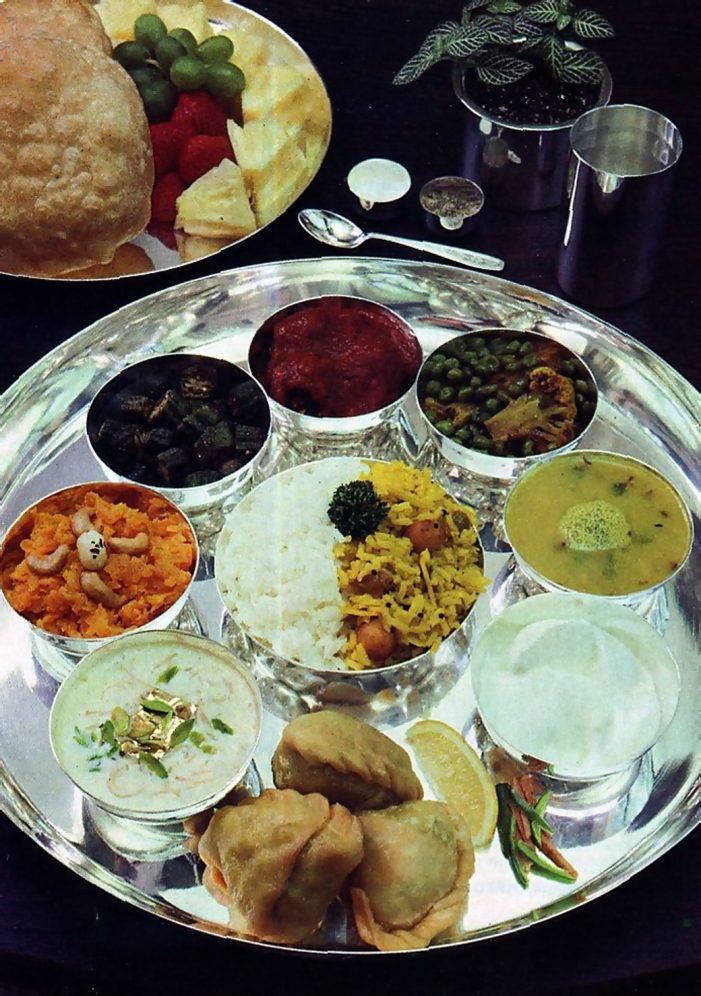
Whether you look at Lord Krsna’s cuisine from the viewpoint of taste, health, economics, morality, or spiritual benefit, it’s our firm conviction that it’s the best in the world.
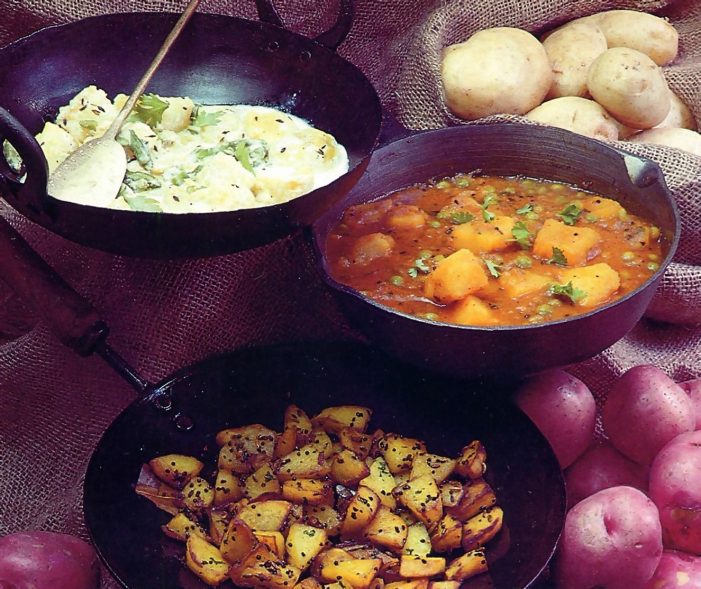
This month, I’d like to discuss three-basic ways of cooking vegetables. As you become thoroughly conversant with these three basic methods and as you observe how each method affects the ingredients you will learn how to vary the final taste, texture, and appearance of the dish.
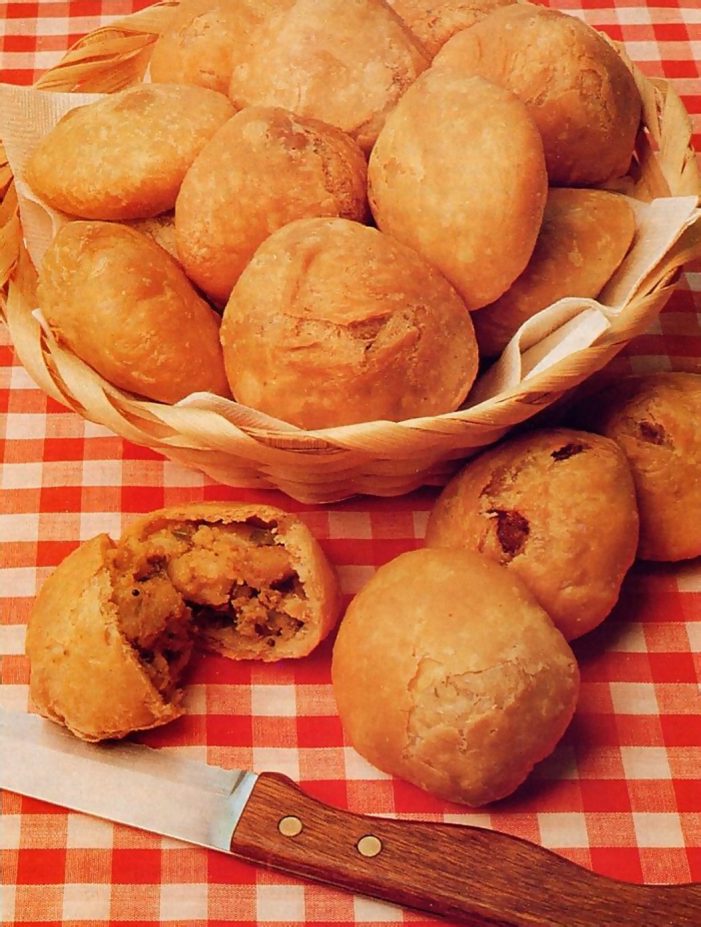
On the anniversary of Srila Prabhupada’s appearance his followers celebrate by preparing one of his favorite dishes—kachoris—spicy vegetable savories.

The family meal has hardly survived in our suburban lives. Dad now leaves home early to the office, a communal breakfast is out of the question. As for dinner . . . well, the kids aren’t hungry anyway.

What we have been calling “Lord Krsna’s Cuisine” on these pages actually includes five cuisines: western Indian (Maharashtrian and Marwari), eastern Indian (Bengali), southern (Madras;), northwest central (Gujarati), and northern (Punjabi).